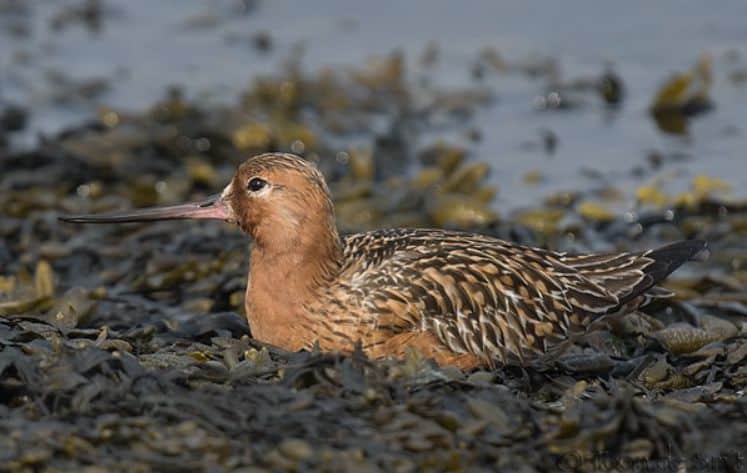The small bar-tailed godwit, coded as 4BBRW has set a new world record for continuous flight. For 11 days, the birdie flew non-stop from Alaska to New Zealand’s Auckland.
The bar-tailed godwit known to scientists as 4BBRW has set a new record for non-stop bird travel. It covered about 12,200 kilometers over the Pacific Ocean during his migration from Alaska to New Zealand. According to The Guardian, the bird’s journey took 11 days. The previous record belonged to another representative of the same species – the female E7, which flew 11,680 kilometers without a single stop in 2007.
With the arrival of autumn, millions of birds from the Northern Hemisphere go south. To get to the wintering places, some of them have to travel huge distances. For example, small spindles (Limosa lapponica), waders from the Scolopacidae family, migrate from breeding sites in the tundra of Eurasia and North America to the coasts in the temperate and tropical zone. The most distant journeys are made by representatives of the subspecies L. l. baueri, which nest in Alaska and spend the winter in Australia and New Zealand, more than ten thousand kilometers from their breeding grounds.
For most of their journey, Alaskan small spindles don’t make stops. In 2007, a female subspecies known as E7 even set a nonstop flight record for birds. During the autumn migration, it travelled 11,680 kilometers over the Pacific Ocean without ever landing on land or water.
However, 13 years later, another small spindle from Alaska managed to break that record. The male, known to ornithologists as 4BBRW (meaning that the researchers marked his paws with two blue, red and white colored rings that facilitate the identification of individual birds) departed from West Alaska on September 16, and 11 days later was already in New Zealand, at one of the bays near Auckland. At first, it overcame the chain of the Aleutian Islands, then moved over the Pacific Ocean to the southwest and turned to the south-east in the area of New Caledonia. Exactly how 4BBRW and other spindles manage to find their way into the open ocean is not yet known.
Data from a satellite transmitter, which scientists have equipped 4BBRW, showed that the bird flew 12854 kilometers without a single stop. Taking into account the errors, the real value is about 12,200 kilometers. At the same time, the flight speed of the bird could reach 90 kilometers per hour.
According to ornithologists, small spindles are perfectly adapted for such epic journeys. Before migration begins, they accumulate significant fat reserves, which allow them to do without food for most of the way. Additional help is the aerodynamic shape of the body and long pointy wings.
4BBRW and its Alaskan relatives will spend the whole autumn and winter wintering, and in March they will return to their breeding grounds. This time they will move along a slightly different route: before returning to their homeland, they will spend about a month replenishing energy reserves on the coast of the Yellow Sea.
During migration, small spindles have to spend a lot of energy. However, some species of birds have learned to travel long distances almost effortlessly, using ascending heat flows. For example, one Andean condor from Argentina was able to fly 172 kilometers without a single flap of wings.
